Every person at least once in his life was a cook, that is, a situation developed in the kitchen when the choice and taste of the prepared dish depended on him. Previously, cookbooks were good helpers, now - the Internet. But there have always been and will be puzzling questions. For example, how many grams vegetable oil in a tablespoon? Let's try to figure it out.
A tablespoon - what kind of measure is this?
Cooking is a responsible, multi-level, in a word, complex process, especially if an amateur in the culinary world took up this task. Often in recipes and various diets, the amount of a required ingredient, for example, vegetable oil, is indicated in grams or milliliters from the International System of Units, known to us from school and physics lessons. However, even advanced cooks do not always have special measuring scales at hand, let alone an ordinary person.
At first glance, this is a problem, the solution of which determines the correctness and taste of the prepared dish, and as a result, the expected effect depends on these grams and milliliters. There is no need to be upset, and there is practically no time for this, since the cooking process is often quite regulated. An ordinary tablespoon will be a lifesaver in such a difficult situation.
Of course, the objectivity of the data in the case of converting the number of grams into spoons will suffer, since the high error will do its job. Different shapes of spoons, despite approximately the same size, will not allow them to be filled equally. In this regard, the residue of incompletely drained oil in the case of measuring an amount exceeding one spoon will add inaccuracy.
That is why, if you need to calculate a very accurate value, it is best to use measuring containers or scales. But with all its shortcomings, this method is still considered quite effective and simple. How many grams of vegetable oil are in a tablespoon can be seen in the table below.
How to measure the right amount of vegetable oil if you don’t have scales?

In a situation where you need to take an exact amount of oil, but there are no scales, having measuring containers on hand, up to a tablespoon, will help. Just look at the label of the oil bottle. There we will see the following information:
- information about the volume of the product - 1 l;
- net weight - 920 g;
- calorie content per 100 g - 899 Kcal.
This will be enough to calculate the given amount of fatty component. Knowing how much vegetable oil is contained in 1 tablespoon will allow us, using simple arithmetic calculations, to determine how many spoons will be required to achieve the value specified in the recipe. But experienced kitchen staff still advise using measuring spoons or cups. In these vessels, the filling line is clearly visible, and the concepts of “with a slide” or “without a slide” will be unacceptable, which will add to the accuracy of the measurements. And this will certainly have a positive effect on the quality of the prepared product.
Determine the calorie content of the product
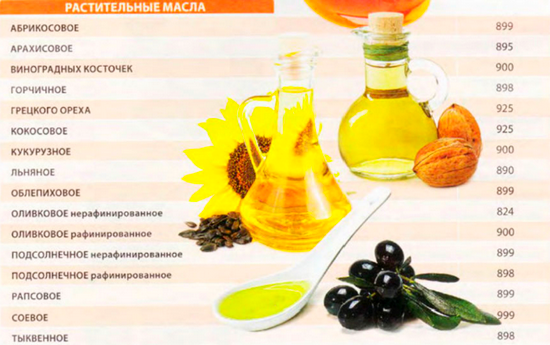
People watching their weight can similarly determine how many calories a tablespoon of vegetable oil will give the body, using the information provided by the manufacturer on the container label and mathematical calculations known to every schoolchild. Although the quality of measurements will make its own adjustments here too. A slight underfill or overfill can, in the end, blur the final picture of consuming the planned number of calories per day.
You can count calories yourself or look at the table above. It will probably be more convenient, and even more accurate, if you measure the required amount of oil into a container in accordance with the calculated calorie consumption conditions and use it without fear throughout the day. Knowing the number of milliliters in a tablespoon of vegetable oil can also help. There is also information about this in the table above.
Probably, chefs and housewives with extensive experience intuitively feel how much vegetable oil needs to be poured in, without resorting to different tables and measuring vessels, in order to ultimately obtain the proper taste or composition of the prepared dish, which does not exceed the required number of kilocalories in content. And for amateur cooks whose kitchen is not yet equipped with scales, using spoons of all kinds, glasses and glasses to measure food is simply a salvation.
Recipes of most national cuisines include abundant use of vegetable oils. The Mediterranean is characterized by the use of cold-pressed olive oil, while the Russian is more familiar with sunflower oil. The calorie content of these products is slightly different from each other; the beloved sunflower oil is 15 kcal higher, but it contains an order of magnitude more vitamin E than its Mediterranean counterpart. When consumed in moderation, sunflower oil has a beneficial effect on the human body. A storehouse of beneficial fatty acids and fat-soluble vitamins - sunflower seed oil - is necessary to maintain youth and attractiveness. No wonder the ancients called it a product of health and longevity.
Beneficial properties and calorie content of sunflower seed oil
The advantages of sunflower oil, which distinguish it favorably from fats of animal origin, are: stimulation of metabolic processes in the body, normalization of the endocrine and reproductive systems, prevention of disorders and diseases of the gastrointestinal tract, as well as the liver and respiratory system; improving memory, preventing the appearance and development of atherosclerotic process, reducing cholesterol in the blood; strengthening the immune system and improving the body's protective functions.  The canons of classical dietetics state that the most successful combination of animal and vegetable fats that have a beneficial effect on human health is considered to be the following proportion: 20 percent animal product and 80 percent oils obtained from plants. Sunflower oil has become the most accessible source of unsaturated fats and vitamins today. The calorie content of this healthy product is quite high due to its high content of vegetable fat (99.9 percent). It is 899 kcal. People who calculate the energy value of daily consumed foods should not be afraid of such a high figure. Since the daily amount of the popular oil, which nutritionists recommend to cover the deficiency of fatty acids and vitamins, is small.
The canons of classical dietetics state that the most successful combination of animal and vegetable fats that have a beneficial effect on human health is considered to be the following proportion: 20 percent animal product and 80 percent oils obtained from plants. Sunflower oil has become the most accessible source of unsaturated fats and vitamins today. The calorie content of this healthy product is quite high due to its high content of vegetable fat (99.9 percent). It is 899 kcal. People who calculate the energy value of daily consumed foods should not be afraid of such a high figure. Since the daily amount of the popular oil, which nutritionists recommend to cover the deficiency of fatty acids and vitamins, is small.
Daily intake of sunflower oil
Answering the question about how much vegetable oil you can eat per day in order not to gain weight, sports nutrition specialists and nutritionists say no more than two (maximum three) tablespoons per day. This amount also includes sunflower oil. In this case, its calorie content will not exceed 300-450 kcal per day. This figure is well within the norms for the consumption of healthy fats designed for people losing weight. 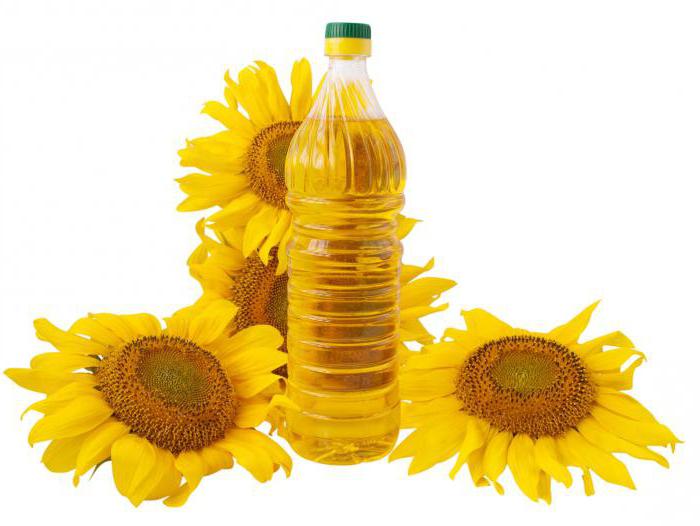 In a diet for weight loss, 30% should be fats and 60% carbohydrates. Moreover, the main share (60-70% of the total amount of vegetable oil) is unrefined sunflower oil - the most useful product with all the vitamins and microelements preserved in it after processing. It differs from others by the presence of a dark shade, acceptable sediment and a pronounced aroma of roasted seeds. It can be used to season vegetable salads, but this product is not suitable for cooking food. No experienced housewife would risk frying fish, meat or vegetables in such oil, since in a hot frying pan it splashes, foams, burns, and also adds bitterness to the finished dish. For frying, refined sunflower oil is better suited, the calorie content of which does not differ from the nutritional value of other types of this product (899 kcal). This oil is pale yellow in color, transparent, and does not have the specific smell or taste of sunflower.
In a diet for weight loss, 30% should be fats and 60% carbohydrates. Moreover, the main share (60-70% of the total amount of vegetable oil) is unrefined sunflower oil - the most useful product with all the vitamins and microelements preserved in it after processing. It differs from others by the presence of a dark shade, acceptable sediment and a pronounced aroma of roasted seeds. It can be used to season vegetable salads, but this product is not suitable for cooking food. No experienced housewife would risk frying fish, meat or vegetables in such oil, since in a hot frying pan it splashes, foams, burns, and also adds bitterness to the finished dish. For frying, refined sunflower oil is better suited, the calorie content of which does not differ from the nutritional value of other types of this product (899 kcal). This oil is pale yellow in color, transparent, and does not have the specific smell or taste of sunflower.
Calorie content - 899 kcal
The labels of bottles of sunflower oil often indicate the calorie content of the product per 100 g. It is 899 kcal. Most consumed oils obtained from plants - flaxseed, corn, sesame, coconut and sunflower oil - have approximately the same calorie content per 100 grams - 898-899 kcal. And only cold-pressed olive oil provides the body with 884 kcal. 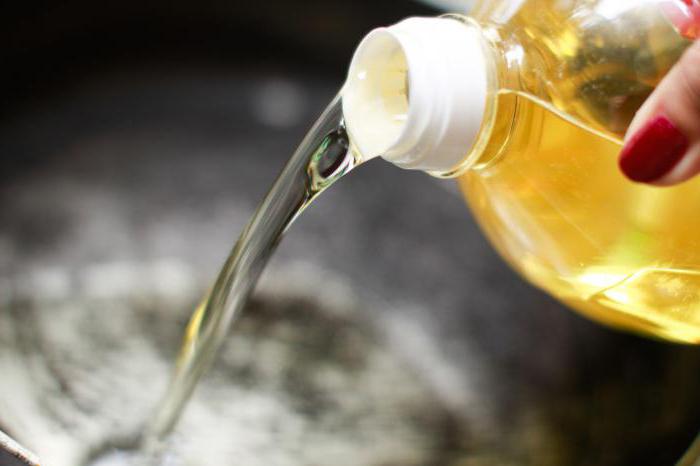 Marketing ploys about the absence of cholesterol in vegetable fats make nutritionists smile - cholesterol is only found in products of animal origin. In pursuit of profit, even sunflower oil is often labeled with such inscriptions.
Marketing ploys about the absence of cholesterol in vegetable fats make nutritionists smile - cholesterol is only found in products of animal origin. In pursuit of profit, even sunflower oil is often labeled with such inscriptions.
Calories: 1 tablespoon sunflower oil
On online forums, people often discuss the calorie content of sunflower oil per tablespoon. It can be determined based on two parameters: the volume of the spoon or its weight. The volume of the working part of the spoon (scoop) can vary between 18-20 ml, and the capacity of a device measuring 7x4 cm in grams is 17 g. One gram of sunflower oil contains 8.99 kcal. You can take the generally accepted weight of the spoon, or you can measure it individually using a kitchen scale. The difference between a dry spoon and a full spoon of sunflower oil can be from 12 to 17 g. The result can be multiplied by 8.99 kcal and get the final figure for the energy value of the product in your kitchen (from 108-153 kcal). 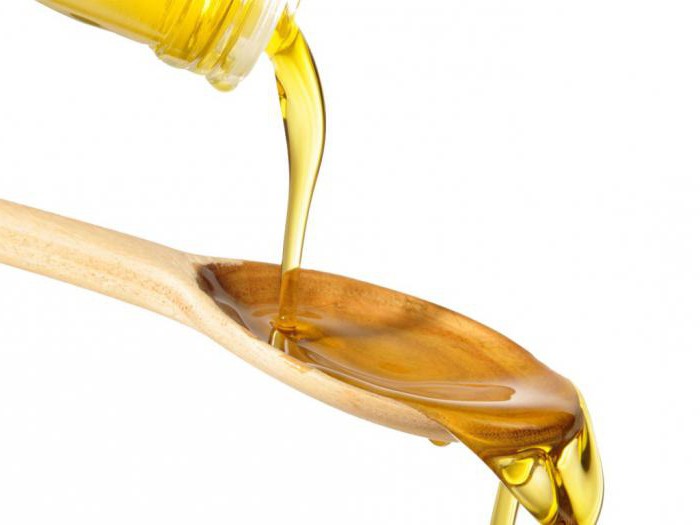 For another calculation option, take a standard spoon Russian production- 18 ml. If 100 ml contains 92 g of sunflower oil, then its energy value is 827 kcal. How to determine how nutritious sunflower oil is? Calories per tablespoon of this the most useful product equal to 18x8.27 kcal = 148.9 kcal. Nutritionists recommend that anyone who strictly monitors the nutritional value of their diet not exceed daily norm consumption of vegetable fats, including sunflower oil.
For another calculation option, take a standard spoon Russian production- 18 ml. If 100 ml contains 92 g of sunflower oil, then its energy value is 827 kcal. How to determine how nutritious sunflower oil is? Calories per tablespoon of this the most useful product equal to 18x8.27 kcal = 148.9 kcal. Nutritionists recommend that anyone who strictly monitors the nutritional value of their diet not exceed daily norm consumption of vegetable fats, including sunflower oil. 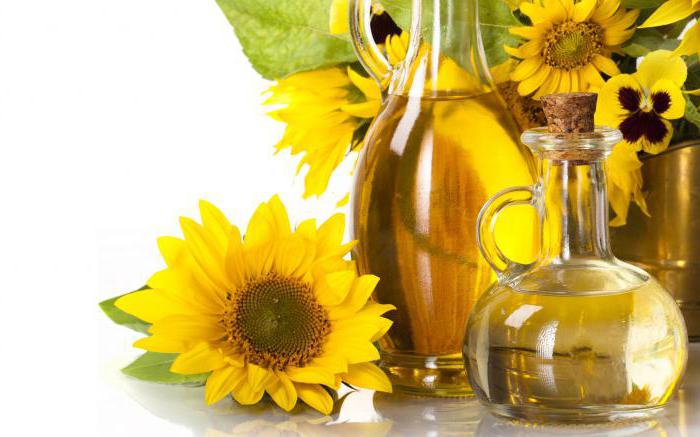 A couple of tablespoons a day can completely cover the daily requirement of fat-soluble vitamins A, D and E, vitamin F, which is not synthesized by our body, and other important elements. How else can you measure the energy value of sunflower oil?
A couple of tablespoons a day can completely cover the daily requirement of fat-soluble vitamins A, D and E, vitamin F, which is not synthesized by our body, and other important elements. How else can you measure the energy value of sunflower oil?
Calories: 1 teaspoon sunflower oil
Quite often people lose weight when refueling vegetable salads I'm interested in the question of what is the calorie content of sunflower oil from a teaspoon. This popular device weighs approximately 5 g. By simple calculations, you can also calculate how many calories can be obtained from a teaspoon of sunflower oil: 8.99 kcal x 5 g = 45 kcal.
Conclusion
In most strict diet recipes, the authors require a categorical refusal of any type of fat. They motivate him by the fact that the calorie content of sunflower oil is prohibitive; to process 1g of the product you will have to spend 9 kcal in the gym. But a deficiency of fat-soluble vitamins can cause significant harm with such a diet. Without vitamin D, the condition of joints, nails, teeth and hair worsens. “Beauty vitamin” E is responsible for hydration, youth and healthy appearance of the skin, vitamin A is responsible for its regeneration. These vitamins dissolve exclusively in fat. Knowing how many calories are in sunflower oil, you can regulate your diet without giving up such a healthy product.
Every person at least once in his life was a cook, that is, a situation developed in the kitchen when the choice and taste of the prepared dish depended on him. Previously, cookbooks were good helpers, now - the Internet. But there have always been and will be puzzling questions. For example, how many grams of vegetable oil are in a tablespoon? Let's try to figure it out.
A tablespoon - what kind of measure is this?
Cooking is a responsible, multi-level, in a word, complex process, especially if an amateur in the culinary world took up this task. Often in recipes and various diets, the amount of a required ingredient, for example, vegetable oil, is indicated in grams or milliliters from the International System of Units, known to us from school and physics lessons. However, even advanced cooks do not always have special measuring scales at hand, let alone an ordinary person.
At first glance, this is a problem, the solution of which determines the correctness and taste of the prepared dish, and as a result, the expected effect depends on these grams and milliliters. There is no need to be upset, and there is practically no time for this, since the cooking process is often quite regulated. An ordinary tablespoon will be a lifesaver in such a difficult situation.
Of course, the objectivity of the data in the case of converting the number of grams into spoons will suffer, since the high error will do its job. Different shapes of spoons, despite approximately the same size, will not allow them to be filled equally. In this regard, the residue of incompletely drained oil in the case of measuring an amount exceeding one spoon will add inaccuracy.
That is why, if you need to calculate a very accurate value, it is best to use measuring containers or scales. But with all its shortcomings, this method is still considered quite effective and simple. How many grams of vegetable oil are in a tablespoon can be seen in the table below.
How to measure the right amount of vegetable oil if you don’t have scales?
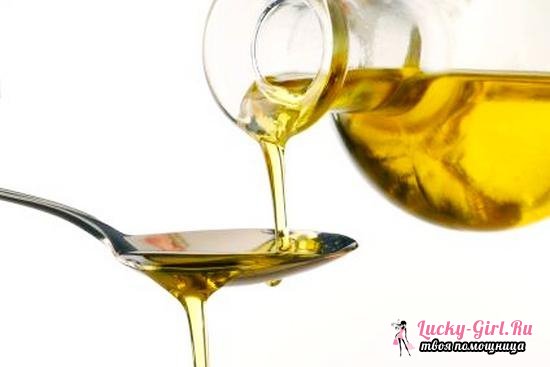
In a situation where you need to take an exact amount of oil, but there are no scales, having measuring containers on hand, up to a tablespoon, will help. Just look at the label of the oil bottle. There we will see the following information:
- information about the volume of the product - 1 l;
- net weight - 920 g;
- calorie content per 100 g - 899 Kcal.
This will be enough to calculate the given amount of fatty component. Knowing how much vegetable oil is contained in 1 tablespoon will allow us, using simple arithmetic calculations, to determine how many spoons will be required to achieve the value specified in the recipe. But experienced kitchen staff still advise using measuring spoons or cups. In these vessels, the filling line is clearly visible, and the concepts of “with a slide” or “without a slide” will be unacceptable, which will add to the accuracy of the measurements. And this will certainly have a positive effect on the quality of the prepared product.
Determine the calorie content of the product

People watching their weight can similarly determine how many calories a tablespoon of vegetable oil will give the body, using the information provided by the manufacturer on the container label and mathematical calculations known to every schoolchild. Although the quality of measurements will make its own adjustments here too. A slight underfill or overfill can, in the end, blur the final picture of consuming the planned number of calories per day.
You can count calories yourself or look at the table above. It will probably be more convenient, and even more accurate, if you measure the required amount of oil into a container in accordance with the calculated calorie consumption conditions and use it without fear throughout the day. Knowing the number of milliliters in a tablespoon of vegetable oil can also help. There is also information about this in the table above.
Probably, chefs and housewives with extensive experience intuitively feel how much vegetable oil needs to be poured in, without resorting to different tables and measuring vessels, in order to ultimately obtain the proper taste or composition of the prepared dish, which does not exceed the required number of kilocalories in content. And for amateur cooks whose kitchen is not yet equipped with scales, using spoons of all kinds, glasses and glasses to measure food is simply a salvation.
Trying to please your family with new delicious culinary masterpieces, you want to do everything perfectly, but it turns out perfect only if you do everything exactly according to the recipe. But often the amount of vegetable oil is indicated not in spoons and glasses, but in grams, as is now customary to do when writing recipes. Also, this question worries those girls who want to lose weight. After all, who else, if not them, is extremely important about the amount of fat consumed in food. The easiest way to measure various kinds of liquids, when they need to be poured accurately, and not “by eye,” is an ordinary tablespoon (or large) spoon. In order to avoid mistakes in the future, you need to have information about how many grams of vegetable oil are in a tablespoon.
All methods of losing weight:
Nutrition for weight loss Products for weight loss Fat burners Drugs for weight loss
Measuring food mass without scales
If we cannot find out the weight of vegetables or fruits without the help of scales, then the weight of, say, buckwheat can be measured simply and without the use of any special devices. People have been measuring mass since ancient times, and until our time many ways to do this have been invented:
- Use scales. But we agreed not to touch them;
- Use measuring cups. A very good way. Such dishes have special marks by which it is possible to determine the weight of the product. The disadvantage of this method is that with marks intended for oil, even if such dishes can be found, you will have to look for more than one day or month;
- Cup. It is used by housewives in all countries of the world, including Russia. It is very convenient to measure the amount of flour for making a cake or ingredients for cooking oatmeal on milk. But it will be difficult to accurately measure the amount of vegetable fat, of which a little is usually required, in a glass;
- Spoon. But this cutlery is ideal for measuring the amount of oil. And the best thing that will help you with this is a tablespoon. They began to use it in Rus', during the reign of Prince Vladimir. After the ruler ordered everyone to eat with spoons, the housewives of those times figured out how to make food even more delicious.
How useful is a spoonful of different types of vegetable oil?
Before you start measuring the amount of oil, let's find out how one tablespoon can benefit you different types oils:

- Olive. It will cope well with various inflammations, improve the functioning of the digestive system and enrich the body with oleic acid;
- . Helps to have a “clear head”, strengthens the nervous system and enriches the body with lecithin;
- Corn. It has a similar composition to sunflower and will help regulate cholesterol;
- . Rich in Omega-3, low in calories, therefore often used in diets;
- Pumpkin. It is especially useful for the male body because it has a huge amount of zinc and selenium.
But remember that consuming a lot of oil and fatty foods will harm not only your waistline, but also your health, so stop measuring it “by eye.”
How much vegetable oil in a tablespoon
To accurately measure oil in grams, you don't need anything else except a tablespoon. And this is the surest way, since measuring a few grams of this product on a scale will also be quite problematic, therefore, it is best to use the calculations that were made by scientists many years ago. Fortunately, now this is not a problem that forces you to go to the library and search for information for several hours, wasting your precious time. Now this can be done without leaving home in 10-15 minutes (since you should not take every site’s word for it, but compare and weed out false information).
But you won’t have to do this either, since the information has already been found and verified.
So, exactly 17 grams fits in one tablespoon. vegetable oil, and not a drop more or less.
Now, to find out how much of this product you need to put in the dough, salad, or add when frying, you just need to divide the indicated amount of grams by 17. For example, if a salad recipe requires adding 50 grams to it. oil, this means that you should pour a little less than three tablespoons of it there.
Using this method, you will notice how much easier it will be for you to cook, and also how much more pleasant and balanced the taste will become. And don’t forget that this way you won’t harm your body if you stick to a diet or count the calories you eat per day. You can also use this method to measure the weight of other products, such as honey, cinnamon, pepper, dried herbs, etc.
Use the knowledge of how many grams of vegetable oil are in a tablespoon, learn more about this method and there will be no need to spend money on expensive electronic scales, which, anyway, will lie somewhere in the cabinet in the kitchen most of the time.
Did you like the news? Share it with your friends:
How many grams of vegetable oil are in a tablespoon?
For those who are interested in cooking or simply often prepare food, it is important to know how many grams or milliliters of oil fit into a glass, tablespoon or teaspoon.
For example, those who love to bake cannot help but worry about the question: 100 grams of butter is how many spoons?
Chemical states of substances
In order to answer correctly, you need to know exactly what state the butter is in - liquid (melted) or solid (but in any case it must be softened, since frozen butter simply cannot be measured normally).
It is known that the structure of the products will determine how many grams will fit, for example, in a tablespoon. Various liquids occupy exactly the space in a spoon that is limited by the recess of the spoon. It is impossible to pour liquids in heaps, and therefore it is customary to measure using them
So how to answer the question that worries many housewives: 100 grams butter- How many tablespoons is this?
Standard volume
The accepted standard capacity is 18 ml. Exactly so much fits into a tablespoon of water, if, of course, it was produced in Russia or the CIS countries. In Europe or America, tablespoons are of a different size (15 ml), this should be taken into account when using recipes from foreign sources.
The weight of other liquids depends on their density compared to water. If liquids are less dense, they will weigh less in the spoon. For example, vegetable oil or melted butter. Exactly 17 ml of them will fit into a tablespoon. Oils are lighter than water, and therefore, despite the same volume, they will weigh differently.
Culinary arithmetic
How much is 100 grams of butter? This question is asked by housewives who have not understood the intricacies of tablespoon volumes. By the way, when measuring the weight of butter in a spoon, which is in a softened state (retains its shape in the spoon), do not forget that you can add it with a large heap - the weight will be greater, or with a medium one - less.
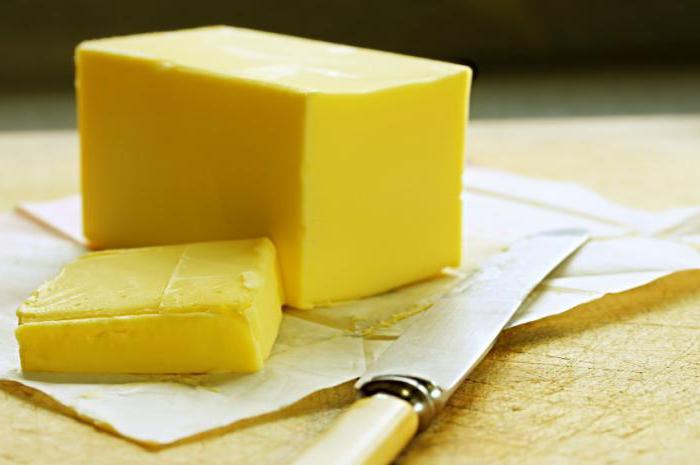
So, first of all, we must understand that 100 grams of butter is how many tablespoons? If you're measuring melted butter by tablespoons, you'll need to divide 100 by 17, which will give you about 5.9. If you neglect 0.1 part, you will get only six tablespoons of completely melted butter, which together equal the 100 grams you need.
If you plan to use softened butter, then 20 grams of it can be placed in a classic tablespoon, but only if the mound is small. If you divide 100 by 20, you get 5. This means that the answer to the exciting question: “100 grams of butter is how many tablespoons?” - will be as follows: “This is five tablespoons.”
